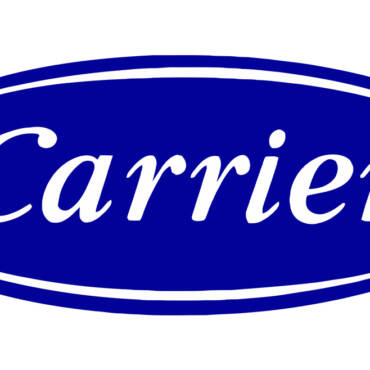The hum of a finely tuned commercial HVAC system is the silent guardian of productivity and comfort, a critical component in any modern business environment. However, the demands placed on these systems are rapidly evolving. Businesses are seeking not just comfort, but also significant energy savings, reduced environmental impact, and the ability to adapt to dynamic occupancy patterns. This has ignited a wave of innovation, pushing the boundaries of traditional HVAC design and implementation.
The Central Challenge: Balancing Diverse Needs
The core issue that commercial HVAC professionals face is that of balancing comfort, efficiency, and sustainability. Gone are the days of simple, static systems. Modern buildings demand intricate, responsive climate control that can adapt to varying loads and diverse needs, all while minimizing energy consumption and environmental impact.
Energy Efficiency: The Drive for Optimization
In the realm of commercial HVAC, energy efficiency stands as a paramount concern. The escalating costs of energy and the pressing need for environmental sustainability have propelled the industry towards innovative solutions. The pursuit of energy efficiency has led to groundbreaking advancements in HVAC technology. Here are some key innovations:
- Variable Refrigerant Flow/Volume (VRF/VRV) Systems:
- These systems provide precise, zone-specific temperature control.
- They adjust refrigerant flow to match individual space requirements, eliminating energy waste.
- Ideal for buildings with diverse occupancy and varying heat loads.
- Intelligent Building Automation Systems (BAS):
- Integrate HVAC, lighting, and other building systems for optimized control.
- Utilize smart sensors and algorithms for real-time adjustments.
- Enable predictive maintenance through AI, minimizing downtime.
- Motion Sensing Technology:
- HVAC zone controls can be paired with motion sensors.
- Rooms with no occupant have their HVAC systems reduce output or turn off.
- This provides substantial energy savings.
Eco-Friendly Advancements: Sustainable HVAC Solutions
The increasing awareness of climate change and the push for sustainability have made eco-friendly HVAC solutions a top priority for businesses. These technologies aim to minimize the environmental impact of HVAC systems while maintaining optimal comfort and energy efficiency.
- Geothermal Heat Pumps:
- Utilize the stable ground temperature for heating and cooling.
- Offer high efficiency and reduced reliance on fossil fuels.
- Scalable to meet the diverse needs of businesses and large facilities
- Low Global Warming Potential (GWP) Refrigerants:
- Replacing ozone-depleting refrigerants with eco-friendly alternatives.
- HFOs and natural refrigerants like CO2 and propane are becoming increasingly popular.
- Solar-Powered HVAC:
- Integrating solar PV systems for sustainable energy.
- Solar thermal systems for supplemental heating and cooling.
- Businesses can reduce reliance on the grid and protect themselves from fluctuating energy prices.
- Ice Powered AC:
- Stores energy in the form of ice, created during off-peak energy hours.
- Uses the stored ice to cool the building during peak energy hours.
- Reduces strain on the power grid.
- Helps businesses lower their energy costs by reducing their peak demand charges.
Novel Solutions: Reimagining HVAC
This section explores emerging HVAC technologies that challenge conventional practices and offer innovative solutions to modern climate control challenges. These “outside-the-box” innovations represent the forefront of HVAC technology and are poised to reshape the industry in the coming years.
- Radiant Cooling and Heating:
These systems circulate water through pipes embedded in floors, walls, or ceilings, providing a more even and comfortable temperature distribution than traditional forced-air systems. The lower operating temperatures of radiant systems contribute to energy savings, and the lack of forced air eliminates drafts and noise. These systems are often paired with chilled beams in commercial spaces for enhanced comfort. - AI-Driven HVAC Optimization:
Artificial intelligence is revolutionizing how commercial HVAC systems operate. AI-powered systems can predict demand, adjust temperature settings in real time, and even perform predictive maintenance, reducing downtime and improving efficiency. - Magnetic Refrigeration:
A game-changer in cooling technology, magnetic refrigeration eliminates the need for harmful refrigerants and uses magnetocaloric materials to create cooling effects. This innovation is still emerging but holds significant potential for commercial applications.
The Future of Commercial HVAC: Smart, Sustainable, and Integrated
The commercial HVAC industry is undergoing a rapid transformation, encompassing advancements from AI-powered optimization to innovative technologies like geothermal heating and magnetic refrigeration. These innovations are solving long-standing problems related to energy waste, high costs, and environmental impact. By implementing modern HVAC technologies, businesses can achieve a balance between efficiency, sustainability, and comfort.
Whether you’re looking to upgrade your current system or build a new facility, staying ahead of HVAC trends will ensure your business remains competitive and energy-conscious. The cutting edge of commercial HVAC isn’t just about keeping buildings comfortable—it’s about redefining the future of climate control.
Whether you require installation, repair, or maintenance, our technicians will assist you with top-quality service at any time of the day or night. Take comfort in knowing your indoor air quality is the best it can be with MOE heating & cooling services Ontario's solution for heating, air conditioning, and ventilation that’s cooler than the rest.
Contact us to schedule a visit. Our qualified team of technicians, are always ready to help you and guide you for heating and cooling issues. Weather you want to replace an old furnace or install a brand new air conditioner, we are here to help you. Our main office is at Kitchener but we can service most of Ontario's cities
Source link



